Improving the interface between electrodes and neurons has been the focus of research for the last decade. Neuroelectrodes should show small geometrical surface area and low impedance for measuring and high charge injection capacities for stimulation. Increasing the electrochemically active surface area by using nanoporous electrode material or by integrating nanostructures onto planar electrodes is a common approach to improve this interface. In this paper a simulation approach for neuro electrodes' characteristics with integrated high aspect ratio nano structures based on a point-contact-model is presented. The results are compared with experimental findings conducted with real nanostructured microelectrodes. In particular, effects of carbon nanotubes and gold nanowires integrated onto microelectrodes are described. Simulated and measured impedance properties are presented and its effects onto the transfer function between the neural membrane potential and the amplifier output signal are studied based on the point-contact-model. Simulations show, in good agreement with experimental results, that electrode impedances can be dramatically reduced by the integration of high aspect ratio nanostructures such as gold nanowires and carbon nanotubes. This lowers thermal noise and improves the signal-to-noise ratio for measuring electrodes. It also may increase the adhesion of cells to the substrate and thus increase measurable signal amplitudes.
1.
Introduction and main result
In this paper, we will are concerned with existence of quasi-periodic solutions for a two-dimensional $ (2D) $ quasi-periodically forced beam equation
with periodic boundary conditions
where $ \varepsilon $ is a small positive parameter, $ \phi(t) $ is a real analytic quasi-periodic function in $ t $ with frequency vector $ \omega = (\omega_1, \omega_2 \ldots, \omega_m) \subset[\varrho, 2\varrho]^m $ for some constant $ \varrho > 0. $ Such quasi-periodic functions can be written in the form
where $ \omega_1, \ldots, \omega_m $ are rationally independent real numbers, the "basic frequencies" of $ \phi $, and $ \varphi $ is a continuous function of period $ 2\pi $ in all arguments, called the hull of $ \phi $. Thus $ \phi $ admits a Fourier series expansion
where $ k\cdot\omega = \sum_{\hat{j} = 1}^m k_{\hat{j}}\cdot\omega_{\hat{j}} $. We think of this equation as an infinite dimensional Hamiltonian system and we study it through an infinite-dimensional KAM theory. The KAM method is a composite of Birkhoff normal form and KAM iterative techniques, and the pioneering works were given by Wayne [25], Kuksin [15] and Pöschel [19]. Over the last years the method has been well developed in one dimensional Hamiltonian PDEs. However, it is difficult to apply to higher dimensional Hamiltonian PDEs. Actually, it is difficult to draw a nice result because of complicated small divisor conditions and measure estimates between the corresponding eigenvalues when the space dimension is greater than one. In [11,12] the authors obtained quasi-periodic solutions for higher dimensional Hamiltonian PDEs by means of an infinite dimensional KAM theory, where Geng and You proved that the higher dimensional nonlinear beam equations and nonlocal Schrödinger equations possess small-amplitude linearly-stable quasi-periodic solutions. In this aspect, Eliasson-Kuksin[9], C.Procesi and M.Procesi[20], Eliasson-Grebert-Kuksin [5] made the breakthrough of obtaining quasi-periodic solutions for more interesting higher dimensional Schrödinger equations and beam equations. However, all of the work mentioned above require artificial parameters, and therefore it cannot be used for classical equations with physical background such as the higher dimensional cubic Schrödinger equation and the higher dimensional cubic beam equation. These equations with physical background have many special properties, readers can refer to [4,16,22,23,24] and references therein.
Fortunately, Geng-Xu-You[10], in 2011, used an infinite dimensional KAM theory to study the two dimensional nonlinear cubic Schrödinger equation on $ \mathbb{T}^2 $. The main approach they use is to pick the appropriate tangential frequencies, to make the non-integrable terms in normal form as sparse as possible such that the homological equations in KAM iteration is easy to solve. More recently, by the same approach, Geng and Zhou[13] looked at the two dimensional completely resonant beam equation with cubic nonlinearity
All works mentioned above do not conclude the case with forced terms. The present paper study the problem of existence of quasi-periodic solutions of the equation (1.1)+(1.2). Let's look at this problem through the infinite-dimensional KAM theory as developed by Geng-Zhou [13]. So the main step is to convert the equation into a form that the KAM theory for PDE can be applied. This requires reducing the linear part of Hamiltonian system to constant coefficients. A large part of the present paper will be devoted to proving the reducibility of infinite-dimensional linear quasi-periodic systems. In fact, the question of reducibility of infinite-dimensional linear quasi-periodic systems is also interesting itself.
In 1960s, Bogoliubov-Mitropolsky-Samoilenko [3] found that KAM technique can be applied to study reducibility of non-autonomous finite-dimensional linear systems to constant coefficient equations. Subsequently, the technique is well developed for the reducibility of finite-dimensional systems, and we don't want to repeat describing these developments here. Comparing with the finite-dimensional systems, the reducibility results in infinite dimensional Hamiltonian systems are relatively few. Such kind of reducibility result for PDE using KAM technique was first obtained by Bambusi and Graffi [1] for Schrödinger equation on $ \mathbb{R} $. About the reducibility results in one dimensional PDEs and its applications, readers refer to [2,7,17,18,21] and references therein.
Recently there have been some interesting results in the case of systems in higher space dimensions. Eliasson and Kuksin [6] obtained the reducibility for the linear d-dimensional Schrödinger equation
Grébert and Paturel [14] proved that a linear d-dimensional Schrödinger equation on $ \mathbb{R}^d $ with harmonic potential $ |x|^2 $ and small $ t $-quasiperiodic potential
reduced to an autonomous system for most values of the frequency vector $ \omega\in \mathbb{R}^n $. For recent development for high dimensional wave equations, Eliasson-Grébert-Kuksin [8], in 2014, studied reducibility of linear quasi-periodic wave equation.
However, the reducibility results in higher dimension are still very few. The author Min Zhang of the present paper has studied the two dimensional Schrödinger equations with Quasi-periodic forcing in [27]. However, it would seem that the result cannot be directly applied to our problems because of the difference in the linear part of Hamiltonian systems and the Birkhoff normal forms. As far as we know, the reducibility for the linear part of the beam equation (1.1) is still open. In this paper, by utilizing the measure estimation of infinitely many small divisors, we construct a symplectic change of coordinates which can reduce the linear part of Hamiltonian system to constant coefficients. Subsequently, we construct a symplectic change of coordinates which can transform the Hamiltonian into some Birkhoff normal form depending sparse angle-dependent terms, which can be achieved by choosing the appropriate tangential sites. Lastly, we show that there are many quasi-periodic solutions for the equation (1.1) via KAM theory.
Remark 1.1. Similar to [13], we introduced a special subset of $ \mathbb{Z}^2 $
for the small divisor problem could be simplified. Then we define subspace $ \mathcal{U} $ in $ L^2(\mathbb{T}^2) $ as follows
We only prove the existence of quasi-periodic solutions of the equation ${\rm(1.1)}$ in $ \mathcal{U} $.
The following definition quantifies the conditions the tangential sites satisfy. It acquired from Geng-Xu-You[10].
Definition 1.1. A finite set $ S = \{i^*_1 = (\tilde{x}_{1}, \tilde{y}_{1}), \cdots, i^*_n = (\tilde{x}_{n}, \tilde{y}_{n})\}\subset{\mathbb{Z}}^2_{odd} (n\geq 2) $ is called admissible if
$ \rm(i). $ Any three different points of them are not vertices of a rectangle (if $ n > 2 $) or $ n = 2 $.
$ \rm(ii). $ For any $ d\in{\mathbb{Z}}^2_{odd}\setminus S $, there exists at most one triplet $ \{i, j, l\} $ with $ i, j\in S, l\in{\mathbb{Z}}^2_{odd}\setminus S $ such that $ d-l+i-j = 0 $ and $ {|i|}^2-{|j|}^2+{|d|}^2-{|l|}^2 = 0 $. If such triplet exists, we say that $ d, l $ are resonant in the first type and denote all such $ d $ by $ \mathcal{L}_1 $.
$ \rm(iii). $ For any $ d\in{\mathbb{Z}}^2_{odd}\setminus S $, there exists at most one triplet $ \{i, j, l\} $ with $ i, j\in S, l\in{\mathbb{Z}}^2_{odd}\setminus S $ such that $ d+l-i-j = 0 $ and $ {|d|}^2+{|l|}^2-{|i|}^2-{|j|}^2 = 0 $. If such triplet exists, we say that $ d, l $ are resonant in the second type and denote all such $ d $ by $ \mathcal{L}_2 $.
$ \rm(iv). $ Any $ d\in{\mathbb{Z}}^2_{odd}\setminus S $ should not be in $ \mathcal{L}_1 $ and $ \mathcal{L}_2 $ at the same time. It means that $ \mathcal{L}_1\cap\mathcal{L}_2 = \emptyset. $
Remark 1.2. We can give an example to show the admissible set $ S $ above is non-empty. For example, for any given positive integer $ n\geq 2 $, the first point $ (\tilde{x}_1, \tilde{y}_1)\in {\mathbb{Z}}^2_{odd} $ is chosen as $ \tilde{x}_{1} > n^2, \tilde{y}_{1} = 2\tilde{x}_{1}^{5^n}, $ and the second one is chosen as $ \tilde{x}_{2} = \tilde{x}_{1}^5, \tilde{y}_{2} = 2\tilde{x}_{2}^{5^n} $, the others are defined inductively by
The choice of the admissible set is same to that in [13], where the proof of such admissible set is given.
In this paper, we assume that
$ \rm\bf(H) $ $ \phi(t) $ is a real analytic quasi-periodic function in $ t $ with frequency vector $ \omega, $ and $ [\phi]\neq0 $ where $ [\phi] $ denotes the time average of $ \phi $, coinciding with the space average.
The main result of this paper in the following. The proof is based on an infinite dimensional KAM theorem inspired by Geng-Zhou[13].
Theorem 1.1. (Main Theorem) Given $ \varrho $, $ \phi(t) $ as above. Then for arbitrary admissible set $ S\subset{\mathbb{Z}}^2_{odd} $ and for any $ 0 < \gamma < 1, 0 < \rho < 1 $ and $ \gamma' > 0 $ be small enough, there exists $ \varepsilon^*(\rho, \gamma, \gamma') > 0 $ so that for all $ 0 < \varepsilon < \varepsilon^*, $ there exists $ R\subset [\varrho, 2\varrho]^m $ with $ {\rm meas}\, R > (1-\gamma)\varrho^m $ and there exists $ \Sigma_{\gamma'}\subset\Sigma: = R\times [0, 1]^{n} $ with $ {\rm meas}\, (\Sigma\setminus\Sigma_{\gamma'}) = O(\sqrt[4]{\gamma'}) $, so that for $ (\omega, \tilde{\xi}_{i^*_1}, \ldots, \tilde{\xi}_{i^*_n})\in \Sigma_\gamma', $ the beam equation $ \rm(1.1)+(1.2) $ admits a quasi-periodic solution in the following
where $ g_j(\vartheta, \omega, \varepsilon) = \varepsilon^{\rho}g_j^*(\vartheta, \omega, \varepsilon) $ is of period $ 2\pi $ in each component of $ \vartheta $ and for $ j\in S, \vartheta\in\Theta(\sigma_0/2), \omega\in\Omega $, we have $ |g_j^*(\vartheta, \omega, \varepsilon)|\leq C $. And the solution $ u(t, x) $ is quasi-periodic in terms of $ t $ with the frequency vector $ \tilde{\omega} = (\omega, (\tilde{\omega}_j)_{j\in S}) $, and $ \tilde{\omega}_j = \varepsilon^{-4}|j|^2+O(|\tilde{\xi}|)+O(\varepsilon) $.
2.
The Hamiltonian setting
Let's rewrite the beam equation (1.1) as follows
Introduce a variable $ v = u_t $, the equation (2.1) is transformed into
Introducing $ q = \frac{1}{\sqrt{2}}({(-\Delta)^{\frac{1}{2}}}u-{\rm i}{(-\Delta)^{-\frac{1}{2}}}v) $ and (2.2) is transformed into
The equation can be written as the Hamiltonian equation $ \dot{q} = {\rm i}\frac{\partial H}{\partial {\bar q}} $ and the corresponding Hamiltonian functions is
The eigenvalues and eigenfunctions of the linear operator $ -\Delta $ with the periodic boundary conditions are respectively $ \lambda_j = |j|^2 $ and $ \phi_j(x) = \frac{1}{2\pi}e^{{\rm i} < j, x > } $. Now let's expand $ q $ into a Fourier series
the coordinates belong to some Hilbert space $ l^{a, s} $ of sequences $ q = (\cdots, q_j, \cdots)_{j\in{\mathbb{Z}}^2_{odd}} $ that has the finite norm
The corresponding symplectic structure is $ {\rm i}\sum_{j\in{{\mathbb{Z}}^2_{odd}}} dq_j\wedge d{\bar q}_j $. In the coordinates, the Hamiltonian equation (2.3) can be written as
with
where
Denote $ \varphi(\vartheta) $ be the shell of $ \phi(t) $, we introduce the action-angle variable $ (J, \vartheta)\in{\Bbb{R}^m\times\Bbb{T}^m}, $ then (2.6) can be written as follows
and the corresponding Hamiltonian function is
where
and
3.
Reducibility via KAM theory
Now We are going to study the reducibility of the Hamiltonian (2.8). To make this reducibility, we introduce the notations and spaces as follows.
For given $ \sigma_0 > 0, \Gamma > 0, 0 < \rho < 1 $, define
where $ C $ is a constant. Let
and denote
where $ |\cdot| $ stands for the sup-norm of complex vectors and $ l^{a, s} $ stands for complex Hilbert space. For arbitrary four order Whitney smooth function $ F(\omega) $ on closed bounded set $ R^* $, let
Let $ F(\omega) $ is a vector function from $ R^* $ to $ l^{a, s}(or \Bbb{R}^{m_1\times m_2}) $ which is four order whitney smooth on $ R^* $, we denote
Given $ \sigma_{D^{a, s}} > 0, \Gamma_{D^{a, s}} > 0, $ we define
If $ \tilde w = (\vartheta, J, q, \bar{q})\in D^{a, s} $, we define the weighted norm for $ \tilde w $ by
Let $ F(\eta; \omega) $ is a function from $ D^{a, s}\times R^* $ to $ l^{a, s}(or \Bbb{R}^{m_1\times m_2}) $ which is four order whitney smooth on $ \omega $, we denote
For given function $ F $, associate a hamiltonian vector field denoted as $ X_F = \{F_J, -F_\vartheta, {\rm i} F_{\bar{q}}, -{\rm i} F_q\} $, we define the weighted norm for $ X_F $ by
Assume $ w = (q, \bar{q})\in l^{a, s}\times l^{a, s} $ is a doubly infinite complex sequence, and $ A(\eta; \omega) $ be an operator from $ l^{a, s}\times l^{a, s} $ to $ l^{a, s}\times l^{a, s} $ for $ (\eta; \omega)\in D^{a, s}\times R^*, $ then we denote
Assume $ B(\eta; \omega) $ be an operator from $ D^{a, s} $ to $ D^{a, s} $ for $ (\eta; \omega)\in D^{a, s}\times R^*, $ then we denote
Reducibility of the autonomous Hamiltonian equation corresponding to the Hamiltonian (2.8) will be proved by an KAM iteration which involves an infinite sequence of change of variables. By utilizing the measure estimation of infinitely many small divisors, we will prove that the composition of these infinite many change of variables converges to a symplectic change of coordinates, which can reduce the Hamiltonian equation corresponding to the Hamiltonian (2.8) to constant coefficients.
At the $ \nu- $step of the iteration, we consider Hamiltonian function of the form
where
where $ \eta_{j, \nu, 2, 0} = \eta_{-j, \nu, 2, 0} $, $ \eta_{j, \nu, 0, 2} = \eta_{-j, \nu, 0, 2} $, $ \eta_{j, \nu, n_1, n_2}(\vartheta, \omega) = \sum_{k\in {\Bbb Z}^{m}}\eta_{j, \nu, k, n_1, n_2}(\omega)e^{{\rm i} < k, \vartheta > } $ when $ n_1, n_2 $ $ \in \mathbb{N}, n_1+n_2 = 2 $,
and
with
We're going to construct a symplectic transformation
and
satisfies all the above iterative assumptions (3.1)–(3.4) marked $ \nu+1 $ on $ D_{\nu+1}^{a, s}\times R_{\nu}. $
We assume that there is a constant $ C_{*} $ and a closed set $ R_{\nu} $ satisfies
and for arbitrary $ k\in\mathbb{Z}^m, j\in\mathbb{Z}^2_{odd}, \omega\in R_{\nu}, $
where $ \delta(x) = 1 $ as $ x = 0 $ and $ \delta(x) = 0 $ as $ x\neq0. $ We put its proof in the Lemma 4.1 below.
Next we will construct a parameter set $ R_{\nu+1}\subset R_{\nu} $ and a symplectic coordinate transformation $ T_{\nu} $ so that the transformed Hamiltonian $ H_{\nu+1} = H^*_{\nu+1}+P_{\nu+1} $ satisfies the above iteration assumptions with new parameters $ \varepsilon_{\nu+1}, \sigma_{\nu+1}, \Gamma_{\nu+1} $ and with $ \omega\in R_{\nu+1} $.
3.1. Solving the homological equations
Let $ X_{{\Psi}_\nu} $ be the Hamiltonian vector field for a Hamiltonian $ {\Psi}_\nu: $
where
and $ [\varpi_{j, \nu, 1, 1}] = 0. $ Let $ X_{{\Psi}_\nu}^t $ be its time-t map.
Let $ T_{\nu} = X_{{\Psi}_\nu}^1 $ where $ X_{{\Psi}_\nu}^1 $ denote the time-one map of the Hamiltonian vector field $ X_{{\Psi}_\nu}, $ then the system (3.1)$ (\nu) $ is transformed into the form (3.1)$ (\nu+1) $ and satisfies (3.2)$ (\nu+1) $, (3.3)$ (\nu+1) $ and (3.4)$ (\nu+1) $. More precisely, the new Hamiltonian $ H_{\nu+1} $ can be written as follows by second order Taylor formula
The Hamiltonian $ \Psi_\nu $ is satisfies the homological equation
which is equivalent to
Let's inserting (3.8) into (3.10)
Thus
3.2. Estimation on the coordinate transformation
Now we're going to estimate $ {\Psi}_\nu $ and $ X_{{\Psi}_\nu}^1 $. By Cauchy's estimate and $ (3.2)(\nu) $
and
can be obtained. By $ \omega\in R_{\nu} $ and $ (3.7)({\nu}), $
and
for $ n_1 = 0, n_2 = 2 $ or $ n_1 = 2, n_2 = 0 $. According to Lemma 3.3 in [26], for $ (\vartheta; \omega)\in \Theta(\sigma_{\nu+1})\times R_{\nu} $,
where $ C: = CC_*\varrho^{-1}. $ Moreover, in view of $ (3.3)({\nu}) $ and $ (3.4)({\nu}) $,
Similarly
By (3.14) and (3.16), we have
Similar to the above discussion, the following estimates can be obtained
Now let's estimate the flow $ X^t_{{\Psi}_\nu}, $ denote
By (3.17)–(3.19),
The vector field $ X_{{\Psi}_\nu} $ is as follows
The integral from $ 0 $ to $ t $ of the above equation, we have $ X_{{\Psi}_\nu}^t: $
where $ (\vartheta^\mathcal {C}, J(0), w(0)) $ is the initial value,
and $ M_{\nu}(\vartheta; \omega) $ are the corresponding matrices. According to $ \varepsilon_\nu = \varepsilon^{(1+\rho)^\nu} $, then
as $ \varepsilon < 1, $ where $ C $ is an absolute constant. In view of (3.17), for $ \vartheta\in \Theta(\sigma_{\nu+1}) $,
then
In view of (3.18),
where
then
By (3.22) and (3.23),
and for $ t\in[0, 1] $,
Let's define $ J(t) $ in (3.20) as
By (3.18), (3.25) and (3.21),
and for any $ w'\in l^{a, s}\times l^{a, s} $,
By (3.19), (3.25) and (3.21),
Denote
from (3.20), (3.24) and (3.26),
where $ \Pi_\mathcal {Z}, \Pi_\omega $ denote the projectors
and $ \Pi_\vartheta, \Pi_J, \Pi_w $ denote the projectors of $ \mathcal {Z}^{a, s} = \mathbb{C}^m/2\pi\mathbb{Z}^m\times\mathbb{C}^m\times l^{a, s}\times l^{a, s} $ on the first, second and third factor respectively. According to the first equation of (3.25), (3.27) and (3.31),
By (3.31), we have
where $ D $ is the differentiation operator with respect to $ (\vartheta, w, J). $ In view of (3.25), (3.28) and (3.29), for $ \tilde w = (\vartheta', w', J'), (\vartheta, w, J)\in D^{a, s}_{\nu+1}, $
Thus
Similarly
and
3.3. Estimation for the new normal form and the new smaller terms
Let
then by $ (3.2)(\nu) $, it is obvious that $ {\lambda }_{j, \nu+1} $ satisfies the conditions $ (3.3)(\nu+1) $ and $ (3.4)(\nu+1) $.
Now let's estimate the smaller terms of (3.9). Notice that those terms are polynomials of $ q_j {q}_{-j} $, $ q_j \bar{q}_j $ and $ \bar{q}_j {\bar{q}}_{-j}. $ So we can write it
where from
we know that $ {{\tilde{\eta}}_{j, \nu+1, n_1, n_2}(\vartheta; \omega)} $ is a linear combination of the product of $ \varpi_{j, \nu, n_1, n_2} $ and $ {\eta_{j, \nu, m_1, m_2}} $. By (3.17) and $ (3.2)(\nu) $,
and
respectively. Thereby, we have
According to $ \varepsilon_\nu^{1-\rho}{(\nu+1)}^{12m+28}\leq1 $ as $ \varepsilon < 1, $ then
From $ \varepsilon_\nu^{2-(1-\rho)} = \varepsilon_{\nu+1}, $ we have $ (3.1)(\nu+1) $ is defined in $ D_{\nu+1}^{a, s} $ and $ {\lambda}_{j, \nu+1} $ satisfies $ (3.3)(\nu+1), (3.4)(\nu+1) $ and $ {\eta_{j, \nu+1, n_1, n_2}} $ satisfies $ (3.2)(\nu+1) $.
3.4. Convergence and reducibility theorem
The reducibility of the linear Hamiltonian systems can be summarized as follows.
Theorem 3.1. Given $ \sigma_0 > 0, $ $ 0 < \gamma < 1, 0 < \rho < 1. $ Then there is a $ \varepsilon^*(\gamma) > 0 $ such that for any $ 0 < \varepsilon < \varepsilon^*(\gamma) $, there exists a set $ \underline { R}\subset [\varrho, 2\varrho]^{m}, \varrho > 0 $ with $ \rm meas\underline R\geq(1-\frac{2\gamma}{3})\varrho^m $ and a symplectic transformation $ \Sigma_\infty^0 $ defined on $ D^{a}_\infty\times\underline R $ changes the Hamiltonian $ (\rm {2.8}) $ into
where
Moreover, there exists a constant $ C > 0 $ such that
where $ id $ is identity mapping.
Proof. Let $ \eta_{j, 0, 2, 0} = \eta_{j, 0, 0, 2} = \frac{1}{4\lambda_j}\varphi(\vartheta) $, $ \eta_{j, 0, 1, 1} = \frac{1}{2\lambda_j}\varphi(\vartheta) $, we have that $ H_{0} = \bar{ H} $ and $ \eta_{j, 0, n_1, n_2} = \lambda_j^{-1}\eta_{j, 0, n_1, n_2}^{*}, \|\eta_{j, 0, n_1, n_2}^{*}\|^*_{\Theta(\sigma_0)\times R_{0}}\leq C, n_1, n_2\in\mathbb{N}, n_1+n_2 = 2 $ where $ C $ is an absolute constant. i.e., the assumptions (3.1), (3.2), (3.3), (3.4) of the iteration are satisfied when $ \nu = 0 $.
We obtain the following sequences:
From (3.30), (3.32) and (3.33), denote
then
Similar to [27], it can be seen that the limiting transformation $ T_0\circ T_1\circ\cdots $ converges to a symplectic coordinate transformation $ \Sigma_\infty^0. $ And there exists an absolute constant $ C > 0 $ independent of $ j $ such that
with $ id $ is identity mapping.
In view of the Hamiltonian (2.8) satisfies the conditions $ (3.1)-(3.4), (3.6), (3.7) $ with $ \nu = 0, $ the above iterative procedure can run repeatedly. Thus the transformation $ \Sigma_\infty^0 $ changes the Hamiltonian $ (\rm {2.8}) $ to
with
We present the following lemma which has been used in the above iterative procedure. The proof is similar to Lemma 3.1 in [15].
Lemma 3.1. For any given $ k\in\Bbb{Z}^m, j\in\mathbb{Z}^2_{odd}, \hat{l}\in\mathbb{N}, $ denote
where $ \delta(x) = 1 $ as $ x = 0 $ and $ \delta(x) = 0 $ as $ x\neq0. $ Then the sets $ R^1, R_{\hat{l}}^2 $ is measurable and
if $ C_*\gg1 $ large enough.
Let
Then we have $ (3.6) $ and $ (3.7) $. Denote
then by $ (3.6) $,
3.5. The Hamiltonian after the iterative procedure
In view of the symplectic coordinate transformation $ \Sigma_\infty^0 $ is linear, and (3.36), then
where
Thus from (3.37), the Hamiltonian (2.8) is transformed into by $ \Sigma_\infty^0 $
and the Hamiltonian (2.9) is transformed into
where
with $ n_1, n_2\in\mathbb{N}, n_1+n_2 = 4, n_1, n_2 = 0, 1, 2, 3, 4 $.
This means that the transformation $ \Sigma_\infty^0 $ changes the Hamiltonian (2.7) into
The following Lemma gives a regularity result, the proof is similar to [13] and is omitted.
Lemma 3.2. For $ a\geq0 $ and $ s > 0 $, the gradients $ \tilde{G}_q^{4}, \tilde{G}_{\bar q}^{4} $ are real analytic as maps from some neighborhood of origin in $ l^{a, s}\times l^{a, s} $ into $ l^{a, s} $ with $ \|\tilde{G}_q^{4}\|_{a, s} = O(\|q\|^3_{a, s}) $, $ \|\tilde{G}_{\bar q}^{4}\|_{a, s} = O(\|q\|^3_{a, s}) $.
4.
Partial Birkhoff normal form
As in [13], Let $ S $ is an admissible set. We define $ \mathbb{Z}_*^2 = \mathbb{Z}^2_{odd}\setminus S $. For simplicity, we define the following three sets:
and
Obviously, the set
is empty. Similar to [13], the set
is empty.
For Proposition 4.1, we give the following lemma that will be proved in the "Appendix".
Lemma 4.1. Given $ \varrho > 0, 0 < \gamma < 1, $ and $ C_* $ large enough, $ \varepsilon $ small enough, then there is a subset $ \overline R\subset{[\varrho, 2\varrho]}^m $ with
so that the following statements hold:
$ \rm(i) $ If $ (i, j, d, l)\in S_1 $ or $ i-j+d-l = 0, |i|^2-|j|^2+|d|^2-|l|^2 = 0, \#(S\cap\{i, j, d, l\}) = 2 $ and $ k\neq 0 $, then for any $ \omega\in\overline R, $
$ \rm(ii) $ If $ (i, j, d, l)\in S_2 $, then for any $ \omega\in\overline R, $
$ \rm(iii) $ If $ (i, j, d, l)\in S_3 $, then for any $ \omega\in\overline R, $
where $ \delta(x) = 1 $ as $ x = 0 $ and $ \delta(x) = 0 $ as $ x\neq0. $
Let
then
Next we transform the Hamiltonian (3.46) into some partial Birkhoff form of order four.
Proposition 4.1. For each admissible set $ S $ there exists a symplectic change of coordinates $ X_F^1 $ that changes the hamiltonian $ H = H_{00}+\varepsilon \tilde{G}^{4} $ with nonlinearity ${\rm(3.44) }$ into
with
Proof. Denote
We find a Hamiltonian
Let $ X_{F}^1 $ be the time-1 map of the Hamiltonian vector field of $ \varepsilon F $ and denote variables as follows
then it satisfies
Now we introduce the parameter vector $ \tilde{\xi} = (\tilde{\xi}_j)_{j\in S} $ and the action-angle variable by setting
From the symplectic transformation (4.16), the Hamiltonian $ \widehat{H} $ is changed into
Through scaling variables
and scaling time $ t\rightarrow \varepsilon^{9}t $, the rescaled Hamiltonian can be obtained
Then $ H $ satisfies the equation (4.8)–(4.13).
Now let's give the estimates of the perturbation $ P. $ For this purpose, we need to introduce the notations which are taken from [13]. Let $ l^{a, s} $ is now the Hilbert space of all complex sequence $ w = {(\ldots, w_j, \ldots)}_{j\in \mathbb{Z}^2_*} $ with
Let $ x = \vartheta\oplus\theta $ with $ \theta = (\theta_j)_{j\in S}, y = J\oplus I, $ $ z = (z_j)_{j\in \mathbb{Z}^2_*} $ and $ \zeta = \omega\oplus (\tilde{\xi}_j)_{j\in S}, $ and let's introduce the phase space
where $ \widehat{{\Bbb T}}^{m+n} $ is the complexiation of the usual $ (m+n) $-torus $ {\Bbb T}^{m+n}. $ Let
and
for $ W = (x, y, z, \bar{z})\in {\mathcal P}^{a, s} $. Set $ \alpha\equiv(\ldots, \alpha_j, \ldots)_{j\in \mathbb{Z}^2_*} $, $ \beta\equiv(\ldots, \beta_j, \ldots)_{j\in \mathbb{Z}^2_*} $, $ \alpha_j $ and $ \beta_j\in \mathbb{N} $ with finitely many nonzero components of positive integers. The product $ z^\alpha {\bar z}^\beta $ denotes $ \prod_jz_j^{\alpha_j} {\bar z}_j^{\beta_j} $. Let
where $ P_{\alpha\beta} = \sum_{k, b}P_{kb\alpha\beta} y^b e^{{\rm i} < k, x > } $ are $ C_{W}^4 $ functions in parameter $ \zeta $ in the sense of Whitney. Let
where, if $ P_{\alpha, \beta} = \sum_{k\in \mathbb{Z}^{m+n}, b\in \mathbb{N}^{m+n}}P_{kb\alpha\beta}(\zeta) y^b e^{{\rm i} < k, x > }, $ $ P_{\alpha\beta} $ is short for
the derivatives with respect to $ \zeta $ are in the sense of Whitney. Denote by $ X_P $ the vector field corresponding the Hamiltonian $ P $ with respect to the symplectic structure $ dx\wedge dy+{\rm i}dz\wedge d\bar{z}, $ namely,
Its weighted norm is defined by
The following Lemma can be obtained and the proof is similar to Lemma 3.2 in [27].
Lemma 4.2. For given $ s', r > 0 $, the perturbation $ P(x, y, z, \bar{z}; \zeta) $ is real analytic for $ (x, y, z, \bar{z})\in D_{a, s} $ $ (s', r) $ and Lipschitz in the parameters $ \zeta\in \underline{\Sigma}, $ and for any $ \zeta\in \underline{\Sigma} $, its gradients with respect to $ z, \bar{z} $ satisfy
and
where $ s' = \sigma_0/3 $ and $ r = \sqrt{\varepsilon}. $
5.
An infinite-dimensional KAM theorem for partial differential equations
In order to prove our main result (Theorem 1.1), we need to state a KAM theorem which was proved by Geng-Zhou [13]. Here we recite the theorem from [13].
Let us consider the perturbations of a family of Hamiltonian
where
in $ n $-dimensional angle-action coordinates $ (x, y) $ and infinite-dimensional coordinates $ (z, \bar z) $ with symplectic structure
The tangent frequencies $ \widehat{\omega} = (\widehat{\omega}_j)_{j\in S} $ and normal ones $ \widehat{ \Omega} = (\widehat{\Omega}_{j})_{j\in \mathbb{Z}^2_*} $ depend on $ n $ parameters
with $ \Pi $ a closed bounded set of positive Lebesgue measure.
For each $ \xi $ there is an invariant $ n $-torus $ {\mathcal T}_0^n = {\Bbb T}^n\times \{0, 0, 0\} $ with frequencies $ \widehat{\omega}(\xi). $ The aim is to prove the persistence of a large portion of this family of rotational torus under small perturbations $ H = H_{00}+P $ of $ H_{00}. $ To this end the following assumptions are made.
Assumption A1. (Non-degeneracy): The map $ \xi\mapsto \widehat{\omega}(\xi) $ is a $ C_W^4 $ diffeomorphism between $ \Pi $ and its image.
Assumption A2. (Asymptotics of normal frequencies):
where $ \widetilde{\Omega}_j $ is a $ C_W^4 $ functions of $ \xi $ and $ \widetilde{\Omega}_j = O(|j|^{-\iota}), \iota > 0 $.
Assumption A3. (Melnikov conditions): Let $ B_d = \widehat{\Omega}_d $ for $ d\in \mathbb{Z}^2_*\setminus(\mathcal{L}_1\cup\mathcal{L}_2), $ and let
there exist $ \gamma', \tau > 0 $ (here $ I_2 $ is $ 2\times 2 $ identity matrix) such that
where $ I $ means the identity matrix.
Assumption A4. (Regularity): $ \mathcal{A}+\mathcal{B}+\bar{\mathcal{B}}+P $ is real analytic in $ x, y, z, \bar z $ and Whitney smooth in $ \xi $; and we have
Assumption A5. (Zero-momentum condition): The normal form part $ \mathcal{A}+\mathcal{B}+\bar{\mathcal{B}}+P $ satisfies the following condition
and we have
Now we state the basic KAM theorem which is attributed to Geng-Zhou [13], and as a corollary, we get Theorem 1.1.
Theorem 5.1. ([13] Theorem 2) Assume that the Hamiltonian $ H = N+\mathcal{A}+\mathcal{B}+\bar{\mathcal{B}}+P $ satisfies $ \rm (\bf{A1})-(\bf{A5}) $. Let $ \gamma' > 0 $ be sufficiently small, then there exists $ \varepsilon > 0 $ and $ a, s > 0 $ such that if $ \|X_P\|_{D_{a, s}(s', r), \Pi} < \varepsilon $, the following holds: there exists a Cantor subset $ \Pi_{\gamma'}\subset\Pi $ with $ {\rm meas}(\Pi\setminus\Pi_{\gamma'}) = O({\gamma'}^{\varsigma}) $ ($ \varsigma $ is a positive constant) and two maps which are analytic in $ x $ and $ C_W^4 $ in $ \xi $,
where $ \Psi $ is $ \frac{\varepsilon}{{(\gamma')}^{16}} $-close to the trivial embedding $ \Psi_0:\mathbb{T}^n\times\Pi\rightarrow\mathbb{T}^n\times\{0, 0, 0\} $ and $ \tilde\omega $ is $ \varepsilon $-close to the unperturbed frequency $ \widehat\omega $, such that for any $ \xi\in\Pi_{\gamma'} $ and $ x\in\mathbb{T}^n $, the curve $ t\rightarrow\Psi(x+\tilde\omega(\xi)t, \xi) $ is a quasi-periodic solution of the Hamiltonian equations governed by $ H = N+\mathcal{A}+\mathcal{B}+\bar{\mathcal{B}}+P. $
In order to apply the above theorem to our problem, we need to introduce a new parameter $ \bar{\omega} $ below.
Given $ \omega_-\in { R} $, for $ \omega\in \bar{\bar{ R}}: = \{\omega\in R\mid |\omega-\omega_-|\leq\varepsilon\}, $ we introduce new parameter $ \bar{\omega} $ by
Then the Hamiltonian (4.8) is changed into
where $ \widehat{\omega}(\xi) = (\varepsilon^{-4}\omega)\oplus\breve{\omega}, \xi = \bar{\omega}\oplus \tilde{\xi}, \hat{z} = (|z_j|^2)_{j\in\mathbb{Z}^2_*}, \hat{x} = \vartheta\oplus\theta, \hat y = J\oplus I $ with
Denote $ \breve{\omega}(\xi) = \varepsilon^{-4}\tilde{\alpha}+A\tilde{\xi}, $ $ \widehat{\Omega}(\xi) = \varepsilon^{-4}\tilde{\beta}+B\tilde{\xi}, $ where
with
Lemma 5.1. Let $ \Pi = [0, 1]^{m+n}, $ for any $ \varepsilon > 0 $ sufficiently small, $ r = \sqrt{\varepsilon} $, then we have
The proof of the above lemma is the same as one of Lemma 4.2.
6.
Proof of main theorem
In this section, we prove that the Hamiltonian (5.2) satisfies the assumptions $ \rm (\bf{A1})-(\bf{A5}) $. In view of (5.5), (5.6), (2.10) and (3.45),
Verifying $ \rm (A1): $ From (5.3),
where $ I_m $ denotes the unit $ m\times m $-matrix. It is obvious that $ {\rm det}{\widetilde A}\neq0. $ So $ {\rm det}A\neq0 $ can be obtained by assuming $ 0 < \varepsilon\ll1. $ Thus assumption $ \rm (A1) $ is verified.
Verifying $ \rm (A2): $ Take $ \varsigma = 4, \iota = 4, $ the proof is obvious.
Verifying $ \rm (A3): $ For (5.2), $ B_d $ is defined as follows,
and
where $ (i, j, l) $ is uniquely determined by $ d $. In the following, we only prove $ \rm (A3) $ for $ {\rm det}[ < k, \widehat\omega(\xi) > I\pm B_d\otimes I_2\pm I_2\otimes B_{d'}] $ which is the most complicated case. For $ k\in{\mathbb{Z}}^{m+n}, b\in{\mathbb{N}}^{m+n} $, denote
Let
We need to prove that $ |{\mathcal Z}(\xi)|\geq \frac{\gamma'}{|k|^\tau}, (k\neq 0). $ For this purpose, we need to divide into the following two cases.
Case 1. When $ k_1\neq0, $ notice that
and from
then all the eigenvalues of $ {\mathcal Z}(\xi) $ are not identically zero.
Case 2. When $ k_1 = 0, $ then
We assert that all the eigenvalues of $ {\mathcal Z}(\xi) $ are not identically zero. Here we're just proving it for $ d, d'\in\mathcal{L}_1 $, and everything else is similar. Let
where
Then
In view of $ |i|^2+|d|^2 = |j|^2+|l|^2 $ and (2.10), (3.45),
Thus,
with $ \hat{\alpha} = (\lambda_{i_1}, \lambda_{i_2}, \ldots, \lambda_{i_n}) $, $ \hat{\beta} = (\frac{3}{8\pi^2\lambda_{i_1}}, \frac{3}{8\pi^2\lambda_{i_2}}, \ldots, \frac{3}{8\pi^2\lambda_{i_n}}) $ and $ \tilde\xi = (\tilde\xi_{i_1}, \tilde\xi_{i_2}, \ldots, \tilde\xi_{i_n}) $. The eigenvalues of $ \widehat{\mathcal Z}(\xi) $ are
Similar to [10], we know that all the eigenvalues are not identically zero. Thus all the eigenvalues of $ {\mathcal Z}(\xi) $ are not identically zero as $ 0 < \varepsilon\ll1. $ Moreover, they are similar to $ d\in\mathcal{L}_1, d'\in\mathcal{L}_2 $ or $ d\in\mathcal{L}_2, d'\in\mathcal{L}_2 $, and omit them here.
Hence all eigenvalues of $ {\mathcal Z}(\xi) $ are not identically zero for $ k\neq 0. $ According to Lemma 3.1 in [10], $ {\rm det}({\mathcal Z}(\xi)) $ is polynomial function in $ \xi $ of order at most four. Thus
By excluding some parameter set with measure $ O(\sqrt[4]{\gamma'}) $, we get
$ \rm (A3) $ is verified.
Verifying $ \rm (A4): $ Assumption $ \rm (A4) $ can be verified easily fulfilled by Lemma 5.1.
Verifying $ \rm (A5): $ The proof is similar to [27].
By applying Theorem 5.1([13] Theorem 2), we get Theorem 1.1.
7.
Appendix
Proof of Lemma 4.1. Case 1. Similar to Lemma 3.1 in [27], there exists a set $ R^{3, 1} $ so that $ \forall \omega\in [\varrho, 2\varrho]^m\setminus R^{3, 1} $, Lemma 4.1$\rm(i)$ is true, and $ {\rm meas} R^{3, 1}\leq\frac{\gamma}{9}\varrho^{m} $. We omit the proof.
Case 2. Assume $ i+j+d+l = 0, |i|^2+|j|^2+|d|^2+|l|^2\neq0 $ and $ \#(S\cap\{i, j, d, l\})\geq 2 $. First of all, we have $ \left||i|^2+|j|^2+|d|^2+|l|^2\right|\geq 1. $ Denote $ f(\varepsilon) = \mu_i+\mu_j+ \mu_d+\mu_l, $ then by $ \mu_j = \lambda_j+\frac{\varepsilon}{2\lambda_j}[\phi]+\frac{1}{\lambda_j}\varepsilon^{(1+\rho)}\mu_j^* $ we have
Case 1.1. For $ k = 0, $ then
when $ \varepsilon $ small enough and $ C_* $ large enough.
Case 1.2. For $ k\neq0, $ denote
and
Case 1.2.1. When $ \#(S\cap\{i, j, d, l\}) = 4 $. Denote
we have
Let
in view of
we have
where the constant $ C_1 $ depends on $ n, m. $ Thus
provided $ C_* $ large enough.
Case 1.2.2. When $ \#(S\cap\{i, j, d, l\}) = 3 $. Assume $ i, j, d\in S, l\in\mathbb{Z}_*^2 $ without loss of generality. Then $ l = -i-j-d $ is at most $ n^3 $ different values. Denote
then
We obtain
where the constant $ C_2 $ depends on $ n, m. $ Thus
provided $ C_* $ large enough.
Case 1.2.3. When $ \#(S\cap\{i, j, d, l\}) = 2 $. Assume $ i, j\in S, d, l\in\mathbb{Z}_*^2 $ without loss of generality. Then we have $ l = -i-j-d $ and
where $ g = |i|^2+|j|^2+|d|^2+|i+j+d|^2\in\mathbb{Z}^{+}. $ Denote
For given $ i, j, g, $ denote
then for $ l = -i-j-d, d\in d^*_{ijg}, $ from $ \varepsilon^{(1+\rho)}(\frac{\mu^*_d}{\lambda_d}+\frac{\mu^*_{-i-j-d}}{\lambda_{-i-j-d}}) $ is sufficiently small,
Thus
We get
When $ |g| > |k|\varrho+4 $, the sets $ {\mathcal I}_{ijg, k}^{3, 2, 3, 1}, {\mathcal I}_{ijg, k}^{3, 2, 3, 2} $ are empty. So let
then
where the constant $ C_3 $ depends on $ n, m. $ Thus
provided $ C_* $ large enough. Denote
then we have $ {\rm meas} R^{3, 2}\leq\frac{\gamma}{9}\varrho^{m} $.
Case 3. Similar to Case 2, there exists a set $ R^{3, 3} $ so that $ \forall\omega\in [\varrho, 2\varrho]^m\backslash R^{3, 3} $, Lemma 4.1$(\rm {iii})$ is true, and $ {\rm meas} R^{3, 3}\leq\frac{\gamma}{9}\varrho^{m} $. We omit the proof.
Denote
then it satisfies as required and
Symbol description
$ \mathbb{N} $ is the set of natural Numbers, $ \mathbb{Z} $ is the set of integers, $ \mathbb{Z}^n $ is an n-dimensional integer space, $ \mathbb{R} $ is the set of real Numbers, $ \mathbb{R}^n $ is an n-dimensional Euclidean space, $ \mathbb{T}^n $ is an n-dimensional torus.
Acknowledgements
We would like to thank the referees for their valuable comments and suggestions to improve our paper. This paper is partially supported by the National Natural Science Foundation of China (Grant Nos.11701567, 11601270) and the Fundamental Research Funds for the Central Universities(Grant Nos.19CX02048A, 17CX02048).
Conflict of interest
The authors declare that they have no competing interests in this paper.














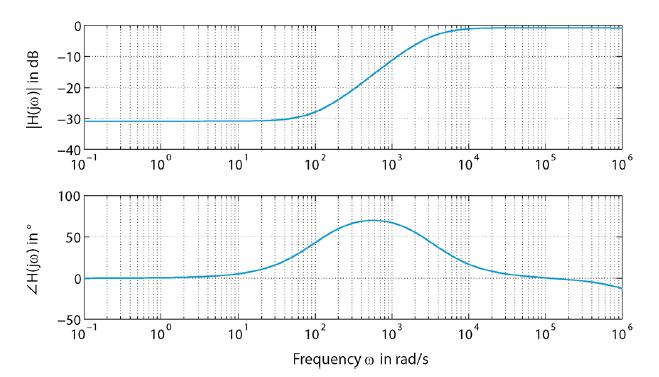
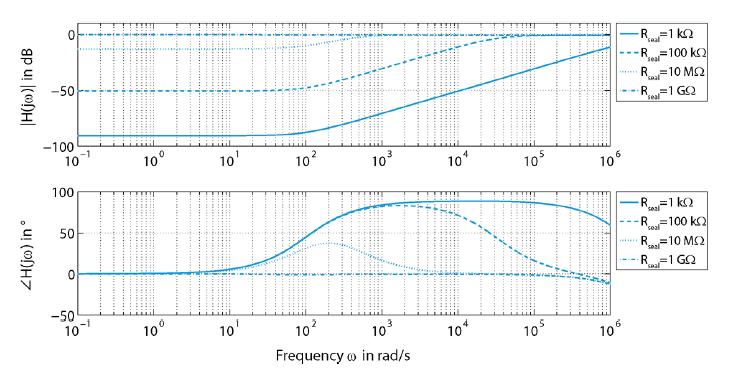
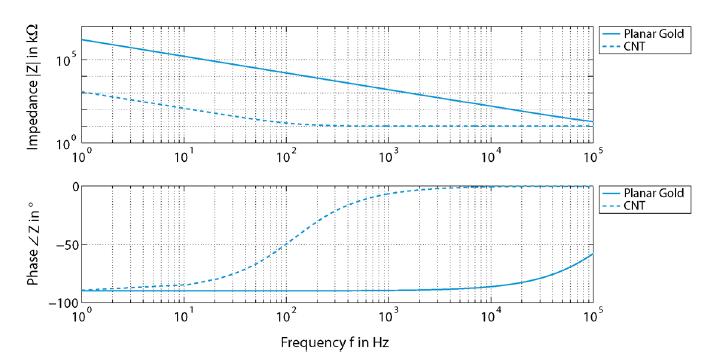
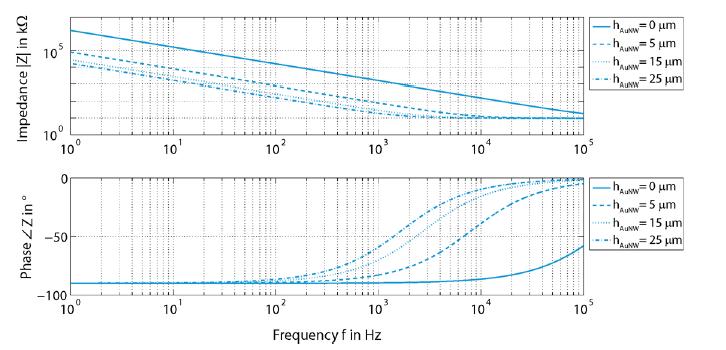
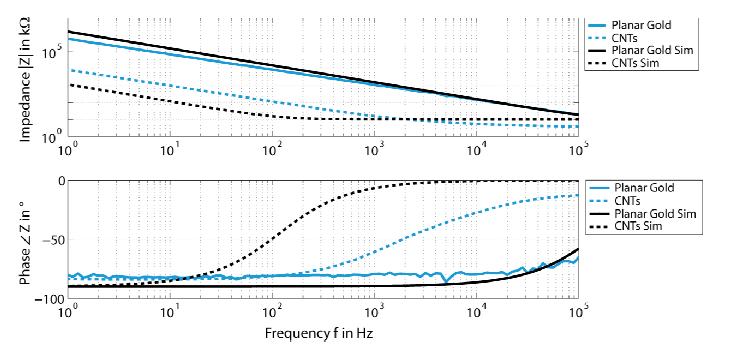
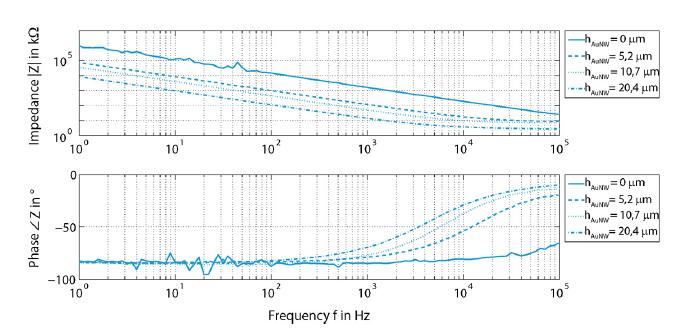
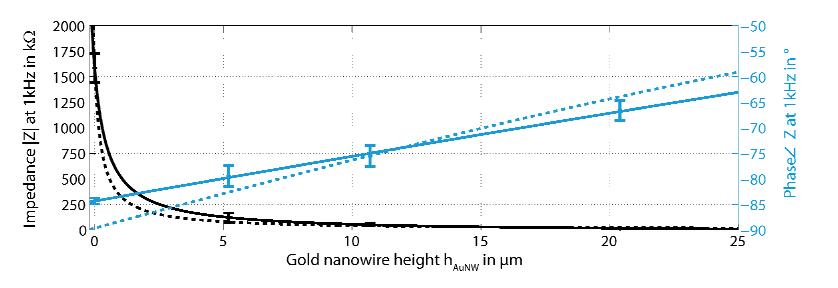


 DownLoad:
DownLoad: